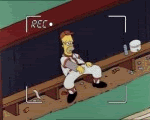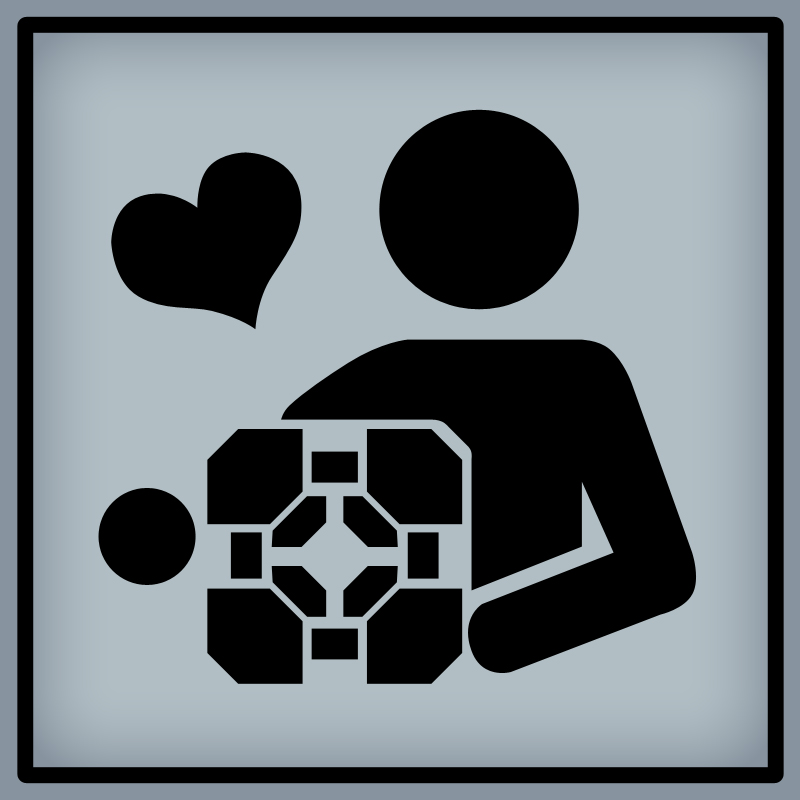Post by Fryguy64 on Apr 18, 2006 9:22:33 GMT -5
The sequel to the DS's first puzzle game is out on the Game Boy Advance. If you missed out on the original then you are mad. Go out and buy it now - it's budget-priced!
The concept is simple enough. You are faced with a series of black and white squares. Draw a line through the squares and then tap to flip their colour. All rows of the same colour will disappear.
The original game featured a "main" mode where rows would continue to drop down, and you had to keep clearing them with a succession of lines of your choosing. While mildly entertaining, this mode was overshadowed for mind-burning entertainment by the Puzzle mode. In this mode, you can draw just one line to clear all of the rows at once. For everyone who was sad when the last Polarium puzzle was unlocked, leaving nothing but the endless mode to tickle your brain-matter, then you will be glad to hear that Polarium Advance features nothing BUT puzzles.
The box declares that there is a puzzle-a-day for a whole year. It's true, but ultimately meaningless. While there are 365 puzzles, and they are laid out in order of month (with harder puzzles for weekends), you are not restricted to play one a day. The next month's puzzles are automatically unlocked as you work your way towards the end of the previous month's, and the first month's puzzles are so simple that you will cruise through them in no time.
The basic game mechanic remains identical, but a lot has changed around it to give new and old players a brand new challenge. First of all, as you'd expect, the GBA does not have a touch screen, so you press A (or L) to choose a starting point, then use the D-Pad to move the cursor around, drawing your line. Press A again to complete your line and see if you've solved the puzzle, or press B at any time to cancel your current line.
You are no longer timed at the puzzles. This is somewhat of a relief. While you were never going to be penalised for taking your time, staring at the same grid for 25 minutes or more, and being reminded of the fact, was mildly frustrating. Moreso, having hints appear at timed intervals was occasionally welcome, but usually patronising. These hints no longer appear, meaning some puzzles will be harder, but you will never feel like the game is sick of waiting for you.
The biggest change to the actual game is no doubt the new blocks. Chain blocks create a fence that will vanish before the rest of the puzzle. When it does, everything above it will fall into the empty spaces below (that's right, there's empty spaces now as well). Multicolour blocks are friendly blocks that will be either white or black depending on what you need to complete the row, even if you draw your line through them. Finally, the dreaded blue-x boxes sit around the edge of the puzzle, preventing you from drawing your line through those squares on the puzzle edge. As you progress these become more and more restrictive, but they do add an extra challenge to the puzzles, preventing them from going stale.
Finally, and perhaps most importantly, is that there are two optional conditions you have to meet to properly complete the puzzles. When you complete a puzzle, that puzzle number on the menu will either have turned black, have a blue star, or have a shiny gold star with green leaves under it. Black means you have completed the puzzle. A blue star means you have met one condition for completing the puzzle, and a gold star means you have met both conditions. But what are they? Only when you revisit a completed puzzle do you find out.
Each puzzle has a designated start and end point, set by the game makers. One condition is that you start and end on these exact points. This can be an annoying condition when you have solved a symmetrical puzzle only to see the developers solved it from the opposite side, but on some levels, it forces you to rethink where you put that path.
Each puzzle also has a number of moves to complete it. Complete a game within this number of moves to satisfy this condition. You get the feeling that the game-makers were quite strict about the move numbers, so you feel quite smart when you have one or two moves remaining when you complete it - only to have it thrown back in your face later on when a puzzle you completed in 14 moves can actually be completed in 2.
Sometimes these conditions are a bit annoying - the symmetry of the levels being unnecessary, and the move number forcing you to redraw your line with one less move on the grid-edge for instance. But they also turn some puzzles into second puzzles. Where you thought you had found the solution, you find out that the game-makers have found a completely different solution, and with the start-end points and the move numbers, you now have to solve that. Anyone who played the original game will know that having hints doesn't necessarily mean the puzzle becomes any easier.
The game has also kept its aesthetically clean look, but perhaps not quite so radically as the original. You can choose to pattern the blocks (I have gone for a stone effect), and each month has a different background image. It really doesn't effect the game, especially on the dinky screen of the GB Micro, giving the game the hint of a newspaper puzzle.
NinDB Conclusion: Excellent newspaper style puzzler. Recommended for anyone who loves the puzzle modes of Polarium and Tetris Attack, or anyone who enjoys Picross, etc. Which reminds me... where's my Picross DS, dammit!?
The concept is simple enough. You are faced with a series of black and white squares. Draw a line through the squares and then tap to flip their colour. All rows of the same colour will disappear.
The original game featured a "main" mode where rows would continue to drop down, and you had to keep clearing them with a succession of lines of your choosing. While mildly entertaining, this mode was overshadowed for mind-burning entertainment by the Puzzle mode. In this mode, you can draw just one line to clear all of the rows at once. For everyone who was sad when the last Polarium puzzle was unlocked, leaving nothing but the endless mode to tickle your brain-matter, then you will be glad to hear that Polarium Advance features nothing BUT puzzles.
The box declares that there is a puzzle-a-day for a whole year. It's true, but ultimately meaningless. While there are 365 puzzles, and they are laid out in order of month (with harder puzzles for weekends), you are not restricted to play one a day. The next month's puzzles are automatically unlocked as you work your way towards the end of the previous month's, and the first month's puzzles are so simple that you will cruise through them in no time.
The basic game mechanic remains identical, but a lot has changed around it to give new and old players a brand new challenge. First of all, as you'd expect, the GBA does not have a touch screen, so you press A (or L) to choose a starting point, then use the D-Pad to move the cursor around, drawing your line. Press A again to complete your line and see if you've solved the puzzle, or press B at any time to cancel your current line.
You are no longer timed at the puzzles. This is somewhat of a relief. While you were never going to be penalised for taking your time, staring at the same grid for 25 minutes or more, and being reminded of the fact, was mildly frustrating. Moreso, having hints appear at timed intervals was occasionally welcome, but usually patronising. These hints no longer appear, meaning some puzzles will be harder, but you will never feel like the game is sick of waiting for you.
The biggest change to the actual game is no doubt the new blocks. Chain blocks create a fence that will vanish before the rest of the puzzle. When it does, everything above it will fall into the empty spaces below (that's right, there's empty spaces now as well). Multicolour blocks are friendly blocks that will be either white or black depending on what you need to complete the row, even if you draw your line through them. Finally, the dreaded blue-x boxes sit around the edge of the puzzle, preventing you from drawing your line through those squares on the puzzle edge. As you progress these become more and more restrictive, but they do add an extra challenge to the puzzles, preventing them from going stale.
Finally, and perhaps most importantly, is that there are two optional conditions you have to meet to properly complete the puzzles. When you complete a puzzle, that puzzle number on the menu will either have turned black, have a blue star, or have a shiny gold star with green leaves under it. Black means you have completed the puzzle. A blue star means you have met one condition for completing the puzzle, and a gold star means you have met both conditions. But what are they? Only when you revisit a completed puzzle do you find out.
Each puzzle has a designated start and end point, set by the game makers. One condition is that you start and end on these exact points. This can be an annoying condition when you have solved a symmetrical puzzle only to see the developers solved it from the opposite side, but on some levels, it forces you to rethink where you put that path.
Each puzzle also has a number of moves to complete it. Complete a game within this number of moves to satisfy this condition. You get the feeling that the game-makers were quite strict about the move numbers, so you feel quite smart when you have one or two moves remaining when you complete it - only to have it thrown back in your face later on when a puzzle you completed in 14 moves can actually be completed in 2.
Sometimes these conditions are a bit annoying - the symmetry of the levels being unnecessary, and the move number forcing you to redraw your line with one less move on the grid-edge for instance. But they also turn some puzzles into second puzzles. Where you thought you had found the solution, you find out that the game-makers have found a completely different solution, and with the start-end points and the move numbers, you now have to solve that. Anyone who played the original game will know that having hints doesn't necessarily mean the puzzle becomes any easier.
The game has also kept its aesthetically clean look, but perhaps not quite so radically as the original. You can choose to pattern the blocks (I have gone for a stone effect), and each month has a different background image. It really doesn't effect the game, especially on the dinky screen of the GB Micro, giving the game the hint of a newspaper puzzle.
NinDB Conclusion: Excellent newspaper style puzzler. Recommended for anyone who loves the puzzle modes of Polarium and Tetris Attack, or anyone who enjoys Picross, etc. Which reminds me... where's my Picross DS, dammit!?






